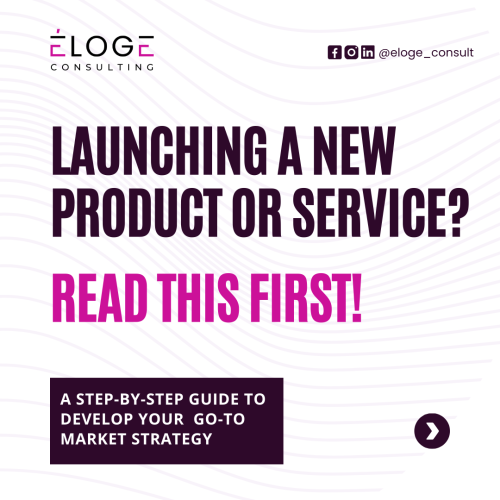Thinking of launching a new product or service? Then having a solid go to marketing (GTM) strategy is vital for success. When you have the right GTM strategy, you are much better placed to connect with your target audience and make your launch a hit.
What Is A Go To Market Strategy?
A go to marketing strategy details how a company will launch its product in a way that maximizes its potential for success. It focuses on engaging customers to persuade them to buy while outshining competitors and covers pricing, marketing, and positioning tactics.
Benefits of A Go To Market Strategy
Whether you’re a startup or an established business, having a clear GTM strategy can make all the difference in achieving your business goals. Here are some of the benefits of an effective go to market strategy:
- A successful product launch: Defining your ideal audience and fine-tuning your messaging, sales channels, and pricing strategy as part of your go to market planning increases sales, improves brand awareness, and secures market share.
- Clear business direction: You can’t market your product effectively if you don’t have a plan. A go to market strategy ensures everyone in your company works in the same direction and understands their roles.
- Better use of your resources: When you have a go to market plan, you save time and money by reducing your risk of a failed launch and enabling efficient allocation of resources.
- Competitive advantage: Who doesn’t want to outcompete their rivals? A go to marketing plan ensures you’re well-positioned and differentiates yourself from your competitors.
- A quicker route to market: By having a GTM planning strategy in place, you can improve your speed to market by refining the positioning and messaging of your product and ensuring the logistics are in place.
We Love Creating Strategies, Let us Create Yours Today!
How To Build Your Go To Market Strategy
Here’s a step-by-step guide to help you develop an effective go-to-market strategy for your brand:
- Define Your Target Audience:
- Clearly identify and understand your ideal customers.
- Create buyer personas to capture the key characteristics, needs, and preferences of your target audience.
- Understand Market Trends and Competition:
- Conduct a thorough market analysis to identify trends, opportunities, and potential challenges.
- Analyze your competitors to understand their strengths, weaknesses, and market positioning.
- Set Clear Objectives:
- Define specific, measurable, achievable, relevant, and time-bound (SMART) objectives for your go-to-market strategy.
- Align your objectives with your overall business goals.
- Develop a Unique Value Proposition:
- Clearly articulate what sets your brand apart from competitors.
- Highlight the key benefits and value your products or services offer to customers.
- Create a Compelling Brand Story:
- Develop a narrative that resonates with your target audience.
- Communicate your brand story consistently across all channels and touchpoints.
- Choose the Right Marketing Channels:
- Select the most effective channels to reach your target audience.
- Consider a mix of online and offline channels, such as social media, content marketing, email, events, and partnerships.
- Build a Strong Online Presence:
- Establish and optimize your brand’s website for a positive user experience.
- Leverage social media platforms to connect with your audience and share your brand story.
- Implement a Pricing Strategy:
- Determine the pricing strategy that aligns with your brand positioning and market expectations.
- Consider promotional pricing or discounts for the initial launch period.
- Build Relationships with Key Stakeholders:
- Identify and engage with key stakeholders, including influencers, industry leaders, and potential partners.
- Leverage networking opportunities to establish strong relationships.
- Train Sales and Support Teams:
- Provide comprehensive training for your sales and customer support teams to ensure they understand your products or services and can effectively communicate your value proposition.
- Launch and Monitor:
- Execute your go-to-market plan and closely monitor its performance.
- Collect feedback, track key performance indicators (KPIs), and be prepared to make adjustments based on real-time data.
- Iterate and Improve:
- Continuously evaluate your go-to-market strategy and make improvements based on feedback, market changes, and performance data.
- Scale and Expand:
- Once you’ve established a successful go-to-market strategy, consider how you can scale and expand your reach.
- Explore new markets, products, or customer segments to fuel further growth.
Go To Market Success Stories
Learning from others’ successes is an excellent way to find insights and inspiration for your go to market strategy.
Take a look at a company like Piggyvest

Piggyvest is a Nigerian fintech (financial technology company) with over 3,000,000 users including me. The app because it helps me save and invest money. PiggyVest started out with one plan: digitize an offline process of using wooden boxes to save money on a daily, weekly or monthly basis.
Their number one growth and customer acquisition strategy is referral marketing. How it works is that, if you refer anyone to use the piggyvest app they’ll pay you N1,000. This process of incentivizing referral is greatly contributed to their huge growth.
Piggyvest also understood the power of social media and how it could complement word of mouth in today’s connected world. They used a variety of channels to provide compelling, shareable material that hit home with their demographic.
By aligning their messaging with relatable trends and topics, Piggyvest successfully captured the attention and interest of potential customers, further fueling their rapid growth.
But remember, positive organic WOM only comes when your product and customer service are top-notch, and that is something I have seen the Piggyvest team speak on multiple times.
Remember that a go-to-market strategy is not a one-time effort but an ongoing process that requires adaptation to market dynamics and customer feedback. Stay agile, be open to learning, and iterate as needed to ensure the long-term success of your brand in the market.
